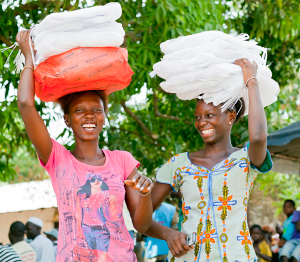The Human Element in the Fight Against Malaria
April 25 is a day when organizations around the world raise awareness about malaria and efforts to eliminate it. This year, the Roll Back Malaria Partnership (RBM) is uniting around the theme “invest in the future: defeat malaria.” As acting secretariat of the RBM Communication Community of Practice (RBM CCoP), the Health Communication Capacity Collaborative (HC3) is playing an active role in ensuring that organizations around the world have the support they need to include evidence-based social and behavior change communication (SBCC) in their activities and interventions.
The past decade has seen breathtaking progress in the fight against malaria, particularly in sub-Saharan Africa. Country-wide mosquito net distributions are enabling families to cut malaria transmission household by household. Net manufacturers are producing nets that last longer and kill the mosquitoes that land on them. Advances in rapid diagnostic testing have made it possible to determine the presence of the parasite.The treatment for most malaria cases, Artemisinin Combination Therapy (ACT), and the drug that clears malarial infection in pregnant women, sulfadoxine-pyrimethamine (SP), are safe, usually highly subsidized or free, and available as long as a health system can deliver them. With the political will, financial backing of the world’s most generous foundation, and millions of communities’ determination, malaria elimination may be possible.
Progress has been made, and we may see a world without malaria in our lifetime. Until then, the parasite continues to claim the lives of millions. The problem with malaria is not simply medical, or about money, or the lack of knowledge. It is an administrative and political problem, and it is a human problem, a situation that demands we take a closer, more compassionate look at why people make certain decisions, why we behave the way we do. Are we really getting the available nets to the most at-risk people, in the quantity needed? When nets are available, which family members are prioritized? If testing and a cure are free and available, why wouldn’t people seek it out? The HC3 team focuses on building the capacity to implement efficient, state-of-the art, transformative SBCC programs. We envision a world in which social and structural barriers to a person’s participation in their own journey to a healthier life fall away. Beyond being a pragmatic means of addressing the root cause of malaria’s spread, this approach’s efficacy is supported by research and data.
Join us on April 25, World Malaria Day, at Johns Hopkins Bloomberg School of Public Health to review this growing body of evidence. The Johns Hopkins Malaria Research Institute, Jhpiego, and the Center for Communication Programs, are proud to welcome the President’s Malaria Initiative coordinator, Rear Admiral Timothy Ziemer as the keynote speaker.








Leave a Reply
Want to join the discussion?Feel free to contribute!